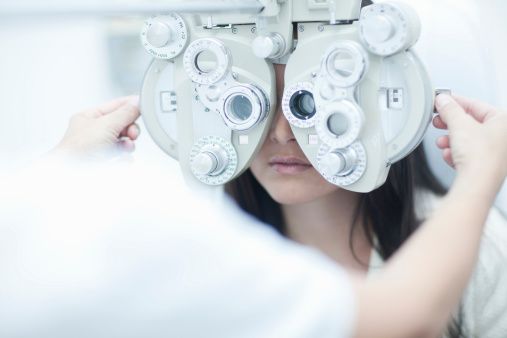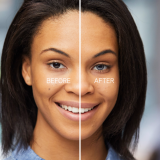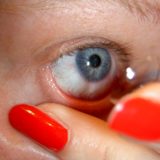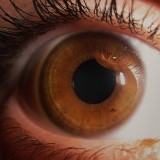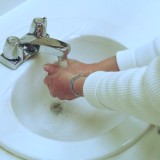Base Curve Measurement for Contact Lenses: What You Need to Know
 There are three primary components to every simple contact lens prescription. You’ve likely seen numbers beside the letters “O.D” (Ocular Dexter) and “O.S.” (Ocular Sinister). Those abbreviations signify the prescriptions in your right eye and your left eye, respectively. The number you may not be familiar with on your prescription or contact lens box is the one designated B.C. or B.C.R. This number represents your base curve measurement.
There are three primary components to every simple contact lens prescription. You’ve likely seen numbers beside the letters “O.D” (Ocular Dexter) and “O.S.” (Ocular Sinister). Those abbreviations signify the prescriptions in your right eye and your left eye, respectively. The number you may not be familiar with on your prescription or contact lens box is the one designated B.C. or B.C.R. This number represents your base curve measurement.
What is your base curve?
The base curve is the measurement of the inside curve of your contact lenses. As part of your contact lens exam, your optometrist will do a Keratometer reading. This assessment helps the optometrist measure the shape of your cornea. This reading will result in a “K-reading” number that will give your optometrist a starting place for figuring out what curve measurement (and then which contacts) will best fit your eye.
For hard contact lenses, this measurement is essential. The base curve number would be a number between 8.0 and 10.0 millimeters and would be more precise because these lenses need to fit just right.
Now that most contact lenses dispensed are soft lenses, this measurement doesn’t need to be quite as precise. Many soft contact lens brands only offer a few different base curve sizes in their lenses, so your optometrist will use your “K” reading to determine the size that’s best for your eye. Often contact lens manufacturers will only offer one or two sizes—numbers like 8.3, 8.6 or 8.9—and your optometrist will choose the size that would fit you best. The lower your B.C. reading number, the steeper the curve of your eye.
What happens if the base curve size is wrong?
If you realize that you’ve gotten contact lenses with an incorrect base curve, you may feel it. Lenses with the wrong base curve feel like they won’t settle right on your eyes. If the lens is too curved for example, it may just slide around in your eye. Every time you blink, it may shift its position. This will make the lens extremely uncomfortable to wear.
The same holds true with a base curve that’s too small, or not steep enough in its angle. The lens may not stay in place, and your eye may feel irritated.
This is another reason why it’s always best to only get contact lenses through a licensed doctor of optometry and a licensed optical dispensary. Trying to purchase contact lenses from another source without being seen and measured by a professional can mean big trouble for your eyes and could even result in permanent vision loss.
Have more questions about your base curve measurement? Read more on our website or talk to your closest America’s Best optometrist!




